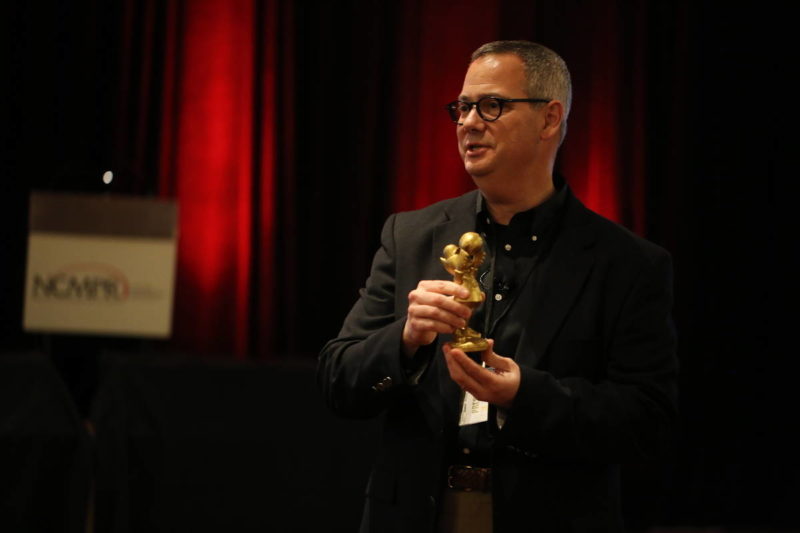Ah, baseball. America’s pastime. It’s a sport that inspires nostalgia for fans of every age. But as our world evolves, how does that change how we interact with the game, the teams and the players? And how they interact with us?
Ron Watermon, Vice President of Communications for the St. Louis Cardinals, opened the 2016 National Council for Marketing & Public Relations conference with a keynote that hit home for every brand storyteller. He explained that while the love of baseball hasn’t changed, the technology has.
“Social media is like radio in the early days of baseball,” said Watermon. “It’s how fans stay connected to the team.”
He broke down how the Card’s communicate with fans using brand journalism, brand entertainment and brand engagement. Each of these three concepts powers the Cardinals’ communications in a different way. Together, they give fans a well-rounded view of the brand. As we walk through Watermon’s talk, think about how your brand could work each of these tactics into your communications strategy.
Brand journalism
“We are investing in telling our own story,” Watermon told the crowd.
Brand journalism is providing the news your fans wouldn’t get otherwise. Your brand has an opportunity to give fans unique access to the team that reporters don’t have (see Kyle Babson’s advice for all sports social media managers here). Watermon shared that the Cardinals have hired two multimedia journalists to churn out content quickly and regularly. They just started their own show, Cardinals Insider.
Stephen Piscotty back in action today and really pumped up for BP. pic.twitter.com/PSHSQSd7Kh
— St. Louis Cardinals (@Cardinals) March 14, 2016
Your brand can learn a lot from reporters. But note that the Cardinals aren’t trying to cover every play like the news outlets. They’re not simply reporting the facts. They’re sharing behind-the-scenes footage, exclusive interviews and content they know fans will love.
Brand entertainment
In this visual age, we all want to be entertained. We are constantly consuming photos and videos. Brand entertainment is how organizations like the Cardinals meet our insatiable need for amusement.
To create something fun for fans, the Cardinals partnered with Phyllis Smith, a St. Louis native and the actress who plays Phyllis on The Office, for an Instagram series called #TheFrontOffice.
#Nestflix #TheFrontOffice Episode 1: First Pitch Wish
A video posted by St. Louis Cardinals (@cardinals) on
Everything starts out just fine. Phyllis and the team’s mascot, Fred Bird, make for great “office birdies.” But then, Fred Bird starts acting out and worrying his teammates.
As the drama unfolded on Instagram, some of the team’s well-known fans connected with Watermon to share how much they enjoyed watching the series. He invited them to shoot their own 15-second spots and join in on the fun. Check out this video from TV host and producer Andy Cohen:
The 53-part #Nestflix series delighted fans and gave them a new way to connect with the team. As you experiment with brand entertainment, show your fans a sense of humor, tell an engaging story and be flexible. Watermon’s team had a plan, but that didn’t stop them from moving things around when Andy Cohen called. Don’t be afraid to take risks. It can be hard to convince your team to invest in brand entertainment, but visual content’s importance is climbing. Organizations that start experimenting now will be ahead of the game in the future. Finally, have fun! It’s obvious the Cardinals had enjoyed producing these spots – yet another reason why fans are sure to love them.
Brand engagement
“It’s never about the technology, it’s always about the people,” Watermon said as he shared one of his proudest moments with the Cardinals.
In 2010, the Cardinals set a goal to convince the President that team legend Stan Musial deserved the Presidential Medal of Freedom. They invited fans to print their own flat Stan the Man (a play on “Flat Stanley”), and sparked a phenomenon. In the summer of 2010, flat Stan the Man’s flooded the stadium, and fans around the world shared photos posing with their own mini-Stan’s on social media. Even Stan Musial and his family shared their own flat Stan the Man photo.
Watermon explained that as flat Stan the Man fever swept the Cardinals community, it became more than an effort to get the President’s attention. The whole community was coming together to honor one of their favorite players in a personal, heartwarming way – an incredible gift for Stan Musial in and of itself. And while the loving support from so many fans might have been enough for Stan Musial, he was presented with the Presidential Medal of Freedom, one of the highest civilian honors in the U.S., in February 2011. His daughter waved a flat Stan the Man as she cheered for him in audience in the East Room of the White House.
Happy President’s Day! Stan Musial was awarded the Presidential Medal of Freedom 5 years ago today.
A photo posted by St. Louis Cardinals (@cardinals) on
The “Stand for Stan” campaign gave fans a meaningful way to connect with the team and pay tribute to one of their favorite players. And as this fan’s “mini @Cardinals shrine” shows, the effort had a long-lasting impact.
The Takeaway
By combining brand journalism, brand entertainment and brand engagement, the Cardinals have created a communications powerhouse across social media platforms. They are giving fans everything they want – exclusive updates about the team, a Cardinals-branded alternative to Netflix (#Nestflix) and an opportunity to get involved. As you plan your brand’s content calendar, think about how your team can use each of these approaches to share your message and delight your fans.




